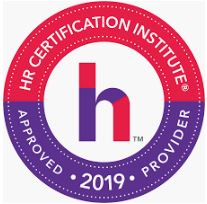Identifying and Managing the Hazards of Combustible Dust
Duration : 60 Minutes

This course, has been approved for 1 HR (General) recertification credit hours toward aPHR™, PHR®, PHRca®, SPHR®, GPHR®, PHRi™ and SPHRi™ recertification through HR Certification Institute® (HRCI®).
Keith Warwick,
Keith Warwick , PE earned a B.S. in Civil Engineering from the University of California at Davis. He became a California Professional Engineer in 1983 and has also held PEs in Indiana, Tennessee, Illinois and New York. He has 34 years of civil, environmental and safety engineering experience. He i Read more
In order to ensure the safe operation of facilities handling combustible dust a balanced mix of engineering and administrative controls are required. This webinar will provide information on the safeguards used to mitigate the hazards associated with combustible dust and how to determine what is appropriate for your facility.
Course Objectives:
• Identify combustible dust hazards and how OSHA regulations cover them
• Anticipate the results of those hazards based on incidents at other facilities
• Recognize hazardous conditions that can cause deflagrations, fires, explosions, or employee exposure
• Explain how combustible dust explodes to spread awareness throughout your facility
• Classify hazardous areas due to combustible dust
• Use primary and secondary combustible dust control strategies
• Audit facilities consistently and effectively to assess combustible dust hazards
• Evaluate hazards found during your assessment
• Develop and implement an OSHA-compliant program to control and eliminate hazards
• Include key components of effective combustible dust management in your program
• Perform tests for combustible dust with accuracy
• Find outside resources to help you develop and implement your program
Why Should You Attend:
Combustible dust hazards can cause deflagrations, fires, and explosions capable of injuring employees and taking lives. If you're able to spot these hazards and control them, you can significantly lower the risk of explosion at your facility. Attend this webinar to learn how to identify, control, and eliminate combustible dust hazards and skills you'll need in order to develop and implement a combustible dust management program that keeps employees safer while they work.
Course Outline:
• Definition of combustible dust
• The hazards of combustible dust
• Current regulations and standards applicable to manufacturers
• Housekeeping guidelines
• Ignition source control
• Explosion protection and isolation
• Building design
• Inspections and maintenance
• Personal protective equipment
• Training requirements
What You Get:
• Training Materials
• Live Q&A Session with our Expert
• Participation Certificate
• Access to Signup Community (Optional)
• Reward Points
Who Will Benefit:
• Manufactures and Shippers
• Safety Directors
• Managers
• Personnel Responsible for preparing SDS sheets
• Chemical users
• Health and Safety Managers
• Safety Associates and Representatives
• Occupational Safety Officers
• Industrial Hygienists
• Health and Safety Technicians
• Risk Managers
• Supervisors and Managers
• Construction Foreman and Superintendents
• Construction Safety Engineers
• Safety Engineers
• Quality Control Officers
• Quality Assurance Officers
• Clerk of the Works
• Technical Writers
• Architects and Engineers
• Designers
• Emergency Services Personnel
• Incident Response Technicians, Managers, Officers
• Human Resource Managers and Generalists
• Interns
• Facility Managers
• Safety Managers
• HR Personnel
• Worker Compensation Professionals
• Company Executives
Please reach us at 1-888-844-8963 for any further assistance or if you wish to register

